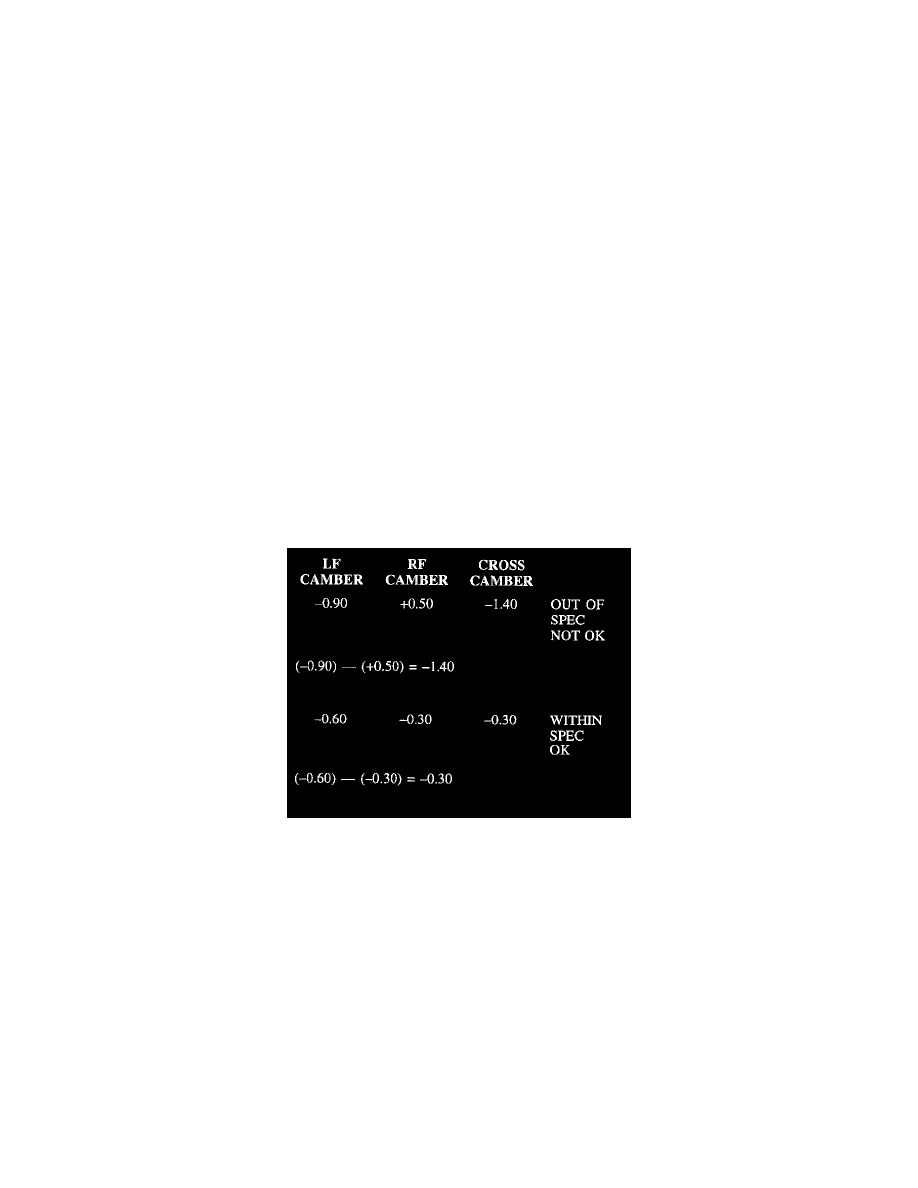L300 V6-3.0L VIN R (2001)

3. Check rear suspension support.
-
Are bushings worn?
-
Are links bent?
4. Check bumper height. Height must be correct before setting alignment. If not, are carrier assemblies leaking, worn, binding, or bent?
5. Check rear stabilizer bar.
-
Are bushings worn or missing?
-
Is bar bent?
Measuring Wheel Alignment
ALIGNMENT SPECIFICATIONS
IMPORTANT: When measuring alignment angles, it is critical that vehicle bumper heights are within specifications. If not correct, add or remove
weight until bumper height is correct.
IMPORTANT: When performing a wheel alignment after any suspension system component removal and installation, vehicle must be driven and/or
the suspension system worked (manually bounced at least 20 times) to allow components to locate properly before alignment adjustment.
1. Install alignment equipment in accordance with the equipment manufacturers instructions.
2. Adjust tire pressures to correct specifications
-
207 kPa (30 psi) tire pressure - Front Tires
-
207 kPa (30 psi) tire pressure - Rear Tires
3. Check frame to body alignment with Frame Alignment Tool J-43628. If frame to body alignment is not correct, loosen fasteners and align frame to
body.
4. Measure alignment angles for each wheel.
Cross camber and cross caster specifications refer to the difference between the left and right side angles. Cross camber and cross caster can
influence vehicle steering pull tendencies. Usually, alignment results will be best when these measurements are as close to zero as possible.
(L) -(R) = CROSS For example:
Front Camber Adjustment
FRONT WHEEL CAMBER
